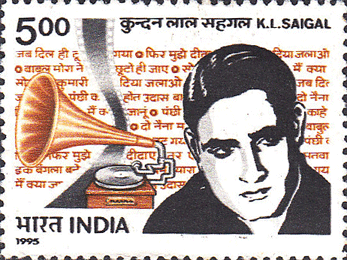My column in Mumbai Mirror today:
Shyam Benegal's Susman offers a portrait of the handloom weaver's predicament, sadly relevant even today.
 |
| Om Puri and Shabana Azmi, in Susman (1987) |
At
one point in Shyam Benegal's Susman (1987), two ikat weavers
are walking back from a meeting with an agent and a city-based buyer.
“Why didn't you ask the buyer for an advance?” says the younger
brother Laxmayya (Annu Kapoor). “Apne munh se paisa maang ke kaahe
apne ko chhota banayein? (Should I have demeaned myself by asking for
money with my own mouth?)” responds the elder brother Ramulu (Om
Puri). “Would have been better not to take the order.”
Susman
is one of Shyam Benegal's less-watched films. It is part of his
clutch of issue-defined films commissioned by government bodies or
cooperatives. It has its limitations: Benegal's regular stable of
'alternative' actors can feel a little too starry. Watching Shabana
Azmi and Om Puri and Pankaj Kapur play impoverished Pochampally
weavers speaking in Dakkhani, can feel like a stretch – Azmi, in
particular, looks and acts far too urbane. But Benegal has always
had the ability to craft fictions that offer a nuanced, thoughtful
picture of the situation he has chosen to depict, and Susman is a
good example.
It
is a film that deserves to be watched this week, as the central
government contemplates a policy shift that might endanger the very
existence of the handloom weaving sector. Scroll.in reported on
Friday that “the Ministry of Textiles is
looking into a memorandum submitted by power loom owners to ease
provisions in the Handloom Reservation Act of 1985 that allow only
handloom weavers to make certain textile products.” Over the
years, the 22 handloom-only items originally listed by the Act has
already been reduced to 11. Also, it is well-known that power loom
weavers manufacture these reserved products, passing them off as
handloom. Further de-reservation is likely to price handloom goods
out of the market, and threaten the survival of what is the world's
most stunningly diverse, skilled range of hand-crafted textiles.
Benegal
seeks to draw in the middle class viewer with a display of handloom
weaves, each sari covering the screen as we hear the unmistakeable
voice of Neena Gupta applaud the particular finesse of each to a
less-knowledgeable but terribly opinionated man. When we finally cut
away from the saris to Gupta, she turns out to be a designer called
Mandira: the handloom sari-wearing, big-bindi-ed figure we all know,
directing some sort of sari-based fashion show.
Mandira
is hard to please, and when she clicks her tongue at some of the
work that master weaver Narasimha (Kulbhushan Kharbanda) brings her
from Pochampally, Narasimha suggests that she explain her demands to
the weavers herself. So it is that our English-speaking designer,
accompanied by her even more English-speaking boyfriend, Jayant
Kripalani, encounters Ramulu and his household.
It
is after this slightly ham-handed beginning that the film comes into
its own. Benegal cleverly uses the household's particular situation
as illustrative of a larger socio-economic reality. In Ramulu's
perfectionism as a craftsman, in his inability to bargain with
agents, in his silent resentment of his situation but his fatalistic
approach to dealing with it, we see the tragic predicament of the
handloom weaver who doesn't have a head for the market. And while
Ramulu is profoundly attached to the work he does, he displays what
little realism he has in refusing to let his little son sit at the
loom.
Because
the financial pressures upon him are such that Ramulu has begun to
see his attachment to his work as a form of bondage. “Ukhaad ke
phenk doonga isko ek din. Yeh kargha nahi jail hai jail. Ismein
bandh karke daal diya hum ko,” shouts Om Puri in one moving scene.
And as we watch him, framed behind the long horizontal bar of his
loom, it feels as if he is indeed boxed into a corner of the world.
“Roti
deti so cheez ko aisa nahi bolte (Don't say such things about the
thing that feeds you),” says his wife Gouramma (Azmi) worriedly.
But the film makes clear that weaving is failing to fill stomachs.
The cooperative societies set up to save weavers from the clutches
of agents and touts have quickly been corrupted from within,
beholden to the powerful. Big orders don't come to the co-op because
they require deposition of advance monies, funds the co-op can't
risk. The co-op secretary loans the Society's supply of silk thread
to Narasimha on the sly, and is bribed to sell off discounted saris
in bulk to Laxmayya, who intends to resell them in Hyderabad and set
up as an agent.
Through
Ramulu's prospective son-in-law Nageshwar, we also see the new
workspaces created by the powerloom. The village of individual homes
in which weavers work at their own pace, often in conjunction with
other family members, is replaced by a cramped
all-male factory space, and the regular thak-thak of the handloom by
the raging sound of the powerloom. In the factory, warns Nageshwar,
a man cannot leave his machine. Benegal doesn't say it, but it's
clear why: because the machine isn't his any more. It owns him,
rather than the other way around.
But
while Benegal's leanings are apparent, he is clear-eyed about how
unsustainable handloom has become for even its most skilled practitioners.
The tragic irony of a weaver having to steal thread in order to
weave a silk sari for a daughter's wedding is a powerful one, one
which recurs in Priyadarshan's Tamil film Kanchivaram (2008).
Kripalani's computer-type boyfriend also represents the view against
handloom, demanding of Mandira how long the artificial “sahara”
of government loans and the “sentimentality” of people like her
will keep it alive.
The
film manages to end on an upbeat note. But the government's answers
to these questions, asked nearly twenty years ago, remain as
tragically short-sighted as ever. Handloom can thrive and grow, if we
only do right by it. As Ashoke Chatterjee, ex-head of the Crafts
Council of India, asked recently: “Why are powerloom lobbyists so
eager for their fabric to appear handmade if demand is falling?”

.jpg)


